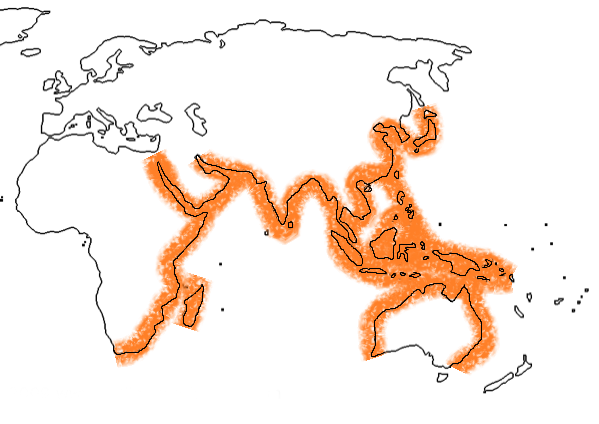Habitat & Distribution
Habitat
Clibanarius longitarus lives in the intertidal zones of tropical regions of the world, predominantly in mangrove swamps, mudflats, estuaries, and sandy substrates, (see Figure 1)(Lewinsohn, 1969; Rahayu, 2003; Litulo, 2005; Tudge, Asakura & Ahyong, 2004.) It has been hypothesised that their habitat choice of intertidal zones and their spatial distribution are partially due to competition and availability of their preferred shells, (Teoh & Chong, 2013.)

Figure 1- Habitats of the Blue striped hermit crab. (Sources from left to right: Mitchell P., 2012; Wantok Environment Centre, 2007; District Council of Mallala)
Distribution
The Blue striped hermit crab is an extremely common and wide spread species, found in tropical/subtropical regions across more than half of the world. They populate the intertidal zones of the Indian and West Pacific Oceans, including the coasts of Africa, the Middle-East, India, the Malay Archipelago, Japan, and Australia, (see Figure 2)(Richmond, 1997; Rahayu, 2003.)

Figure 2- Clibanarius longitarus global distribution. (Source: Map modified and created by Lisa Walton, 2014) |